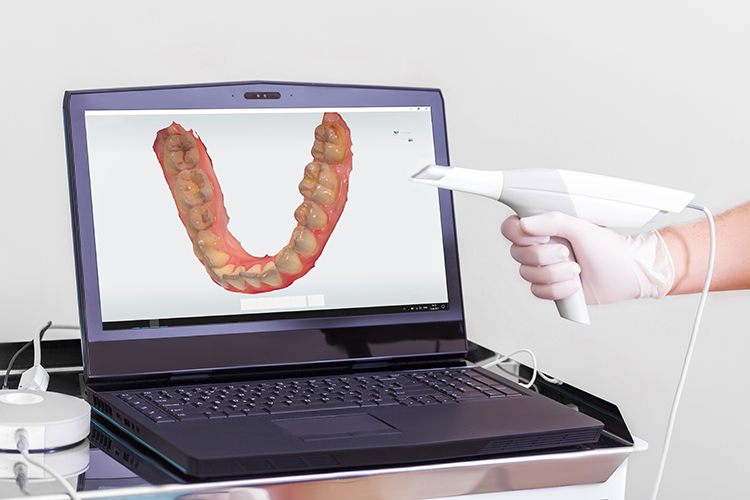We’ve all heard the joke: “Technology is our friend, but only when it does what we want it to do.” When it comes to getting crowns, partials, nightguards, and other dental appliances, intraoral scanners (IOS) are definitely your friend.
The reality is that dentists, technicians, and patients all benefit from digital scanners.
For dentists and lab technicians alike, the opportunity to discuss in real-time the requirements of a patient’s case is a huge benefit. Since these conversations can be held while patients wait in the office, patients see firsthand that their case matters.
Add to the mix increased speed, accuracy, and efficiency, and you’ve got a winning combination for any dental practice. As scanners continue to improve and impress, more and more dentists are taking notice and making the switch.
However, even though intraoral scanners are incredibly powerful tools, they’re not a magic wand. Here are a few tips for getting the most from yours.
Start Slow
If you’re new to a scanner system, it’s probably going to take time to adjust to the device.
In this case, it’s a good idea to slowly incorporate the use of it into your work day, so as to start getting a feel for how it works.
By taking gradual steps to bring it into your regular routine, you give yourself a chance to iron out any wrinkles that crop up. You’ll also begin to develop a feel for how to best apply it in more situations.
Know that although it might take a while to get the hang of it, it will pay off. Dedicate yourself to steady improvement, and be sure to contact your dental lab or vendor with any questions or issues that arise.
Pre-prep Scanning
One critical point to remember for dentists when using an intraoral scanner is this: scan the tooth or teeth prior to prepping, and include it as a study or pre-op scan.
In doing so, your lab has the chance utilize the scan when designing the crown or implant. Your lab will have a much easier time recreating the shape and contour of the original tooth.
Including a scan taken prior to prepping increases the accuracy of the work done, one of the biggest concerns facing dentists and patients alike. Unless the work is accurate, it won’t matter how convenient it was.
Additionally, research has examined how the tooth’s surface material, the IOS software and the experience of the clinician also can contribute to a less-than-perfect scan. A pre-op scan reduces the potential for any of these issues complicating the work being done.
Lastly, Dental Advisor reminds dentists of circumstances in which pre-op scans are best: when the occlusal anatomy and occlusion are ideal. One example of this is during the replacement of a viable crown with recurrent decay.
Managing surrounding tissues
The margin is arguably the most important area for any restoration.
What’s the best way for accurate scanning of this area? With proper tissue retraction.
Because intraoral scanners only see what’s visible to the eye, it’s important for dentists to use two-cord retraction. This is the best way to get the clearest, most complete scans.
It’s also important to keep in mind that since the technology is immediate in displaying results, there’s always an opportunity to review the results while the patient is still in place.
If any poorly scanned areas or missing parts of the image are spotted, it’s easy to rescan those hard-to-reach locations.
Controlling the moisture
Excessive moisture is the enemy of accurate digital impressions, and controlling it is vital when using your intraoral scanner.
Since moisture has a tendency to gather in some of the most important areas, IOS operators should make sure the entire area is dry. You can do this with a combination of compressed air and suction tools right before taking the digital scan.
Make sure to pay extra attention to the interproximal areas and deep preparations – they can be challenging but are vital to the final product.
Finally, make sure that the scanner wand is clean and dry, to make sure the final results weren’t tainted.
Get the Most out of Your Intraoral Scanner: The Takeaways
Intraoral scanners can take your dental practice to the next level, but they definitely take a little practice to use effectively.
Pre-op scans, managing surrounding tissues, and proper moisture control are important starting points in getting the accurate results you need.
If any issues or problems ever come up, reach out to your dental lab or other IOS vendor – they’ll be happy to help get you on the right track!
First Choice Dental Lab
First Choice Dental Lab is prepared to handle all your dental appliance needs. From intraoral scanners to nightguards, and everything in between, we’ve got you covered.
Give us a try today, and we’ll help give you a reason to smile!
Request your fee schedule today by competing the form on the right side or down below!

